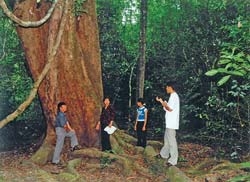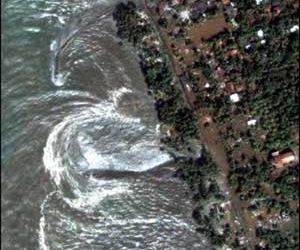Longonot is an extinct volcano located in Kenya. Today, the caldera is covered by a lush, green forest.
Mount Longonot is situated southeast of Lake Naivasha in the Great Rift Valley of Kenya, Africa. The mountain stands at 2,776 meters above sea level and is believed to have last erupted in 1860. Longonot features a vast caldera formed by extensive lava flows approximately 21,000 years ago.
Mount Longonot is protected by the Kenya Wildlife Service as part of Longonot National Park. There is a 3.1 km trail that runs from the park entrance to the rim of the caldera and continues on a 7.2 km loop around the caldera.
Located 60 km northwest of Nairobi, Mount Longonot is near a town also named Longonot. The Longonot ground satellite station is situated to the south of the mountain.

The forest within the caldera in Kenya.
A striking feature of this area is the forest that covers the caldera floor, along with small vents found around the caldera. The mountain is home to a variety of wildlife, particularly plains zebras, giraffes, Thomson’s gazelles, and buffalo.
From the rim of the caldera, visitors can enjoy breathtaking views of Lake Naivasha and the Great Rift Valley. The caldera measures 8 x 12 km and is now a popular tourist attraction in Kenya.
Explore Mount Longonot.
Longonot National Park is one of the most attractive destinations in Kenya. The main attractions of the park include the extinct volcano and the forest within the caldera.
Many foreign tourists prefer to visit here to hike Mount Longonot. The hike is quite strenuous, and you need to be in good physical condition to undertake the climb. The entire walking trail is about 8 – 9 km long but is very steep. A round trip from the park gate to the summit of Longonot and back takes about 5 hours of hiking.
As visitors traverse the rim of Longonot’s caldera, they are rewarded with stunning views of Naivasha and the Great Rift Valley.
The Great Rift Valley is part of an inland mountain range that runs through Kenya from north to south. The valley features the Cherangani Hills and a chain of volcanoes, some of which are still active. The area enjoys a temperate climate, with temperatures typically below 28⁰C.
The Tugen Hills west of Lake Baringo contain fossils preserved in lava flows from 4 million years ago. Remains of early human ancestors have also been found here.





















































